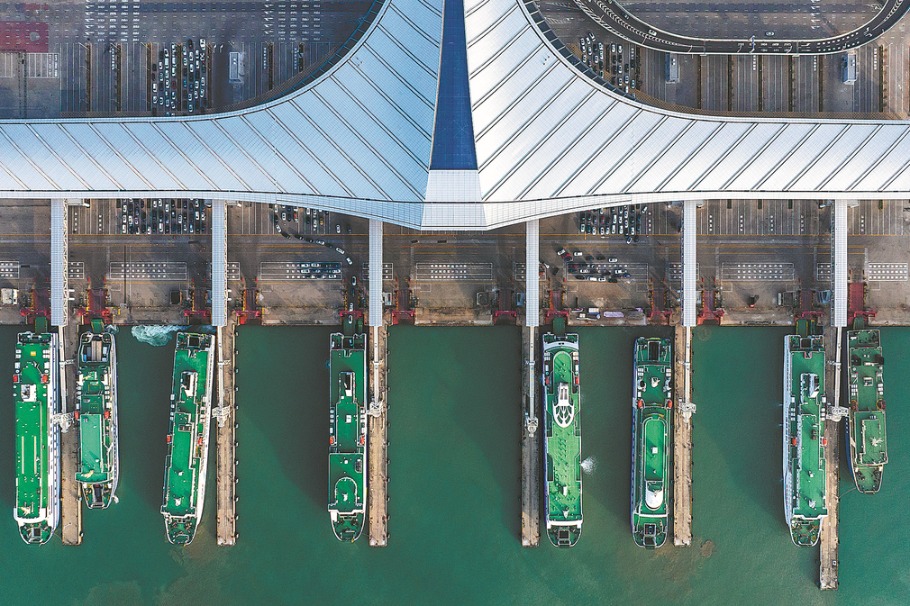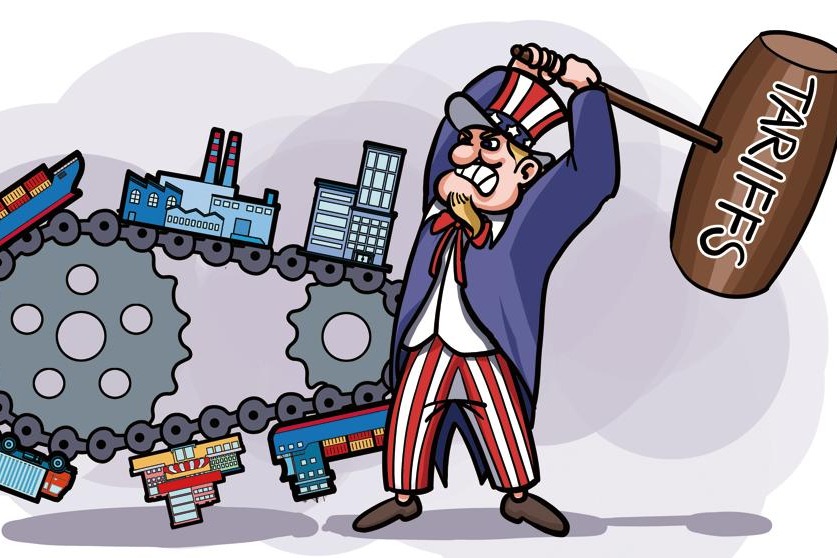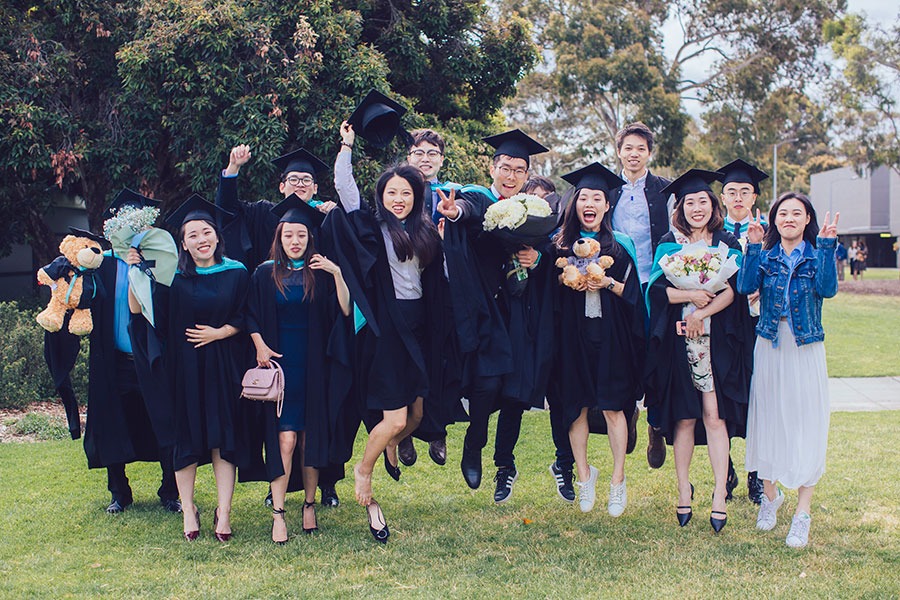Synergistic catalyst


'China-ASEAN+' model forges a new path for cross-regional development
In the lead-up to the 46th Association of Southeast Asian Nations Summit in Kuala Lumpur, Malaysian Prime Minister Anwar Ibrahim reaffirmed the principle of neutrality as essential to preserve ASEAN centrality. He emphasized that a key strategy for ensuring regional stability and prosperity lies in expanding and diversifying ASEAN's partnerships. Reflecting this vision, Malaysia proposed and hosted the inaugural ASEAN-China-Gulf Cooperation Council Summit in May, held alongside the ASEAN Summit.
ASEAN already has strong ties with both the Gulf states and China, advancing cooperation in trade, technology and energy. The first ASEAN-GCC Summit in 2023 and the inaugural China-GCC Summit in 2022, both in Riyadh, reinforced shared goals in economic diversification, the digital economy, renewable energy and food security. Meanwhile, China and ASEAN continue to deepen economic integration, marked by the recent completion of negotiations to upgrade the ASEAN-China Free Trade Agreement.
Individually, ASEAN, the Gulf states and China already enjoy robust bilateral relationships, while also diversifying partnerships with the European Union, the African Union and India. The inaugural trilateral summit in May aimed to elevate these ties within a broader, multilateral framework, bringing together three of the world's most dynamic regional blocs to unlock new economic synergies and drive continent-wide growth.
The ASEAN countries, with their youthful demographics, strategic maritime locations and dynamic economies, offer a growing labor pool and a consumer market with significant potential. China contributes advanced manufacturing capabilities, investment capital and a robust digital economy, while the GCC, rich in energy resources and committed to economic diversification, adds further strategic depth to this tri-regional collaboration. Together, these diverse strengths can catalyze new drivers of growth.
For example, Chinese investment in digital infrastructure can help the ASEAN countries leapfrog into the fourth industrial revolution, while GCC capital can advance clean energy partnerships across Asia. This multidimensional engagement fosters interdependence, enhancing resilience and promoting shared prosperity.
The ASEAN-China-GCC Summit took place against a backdrop of intensifying geopolitical tensions and increasing geoeconomic fragmentation. One of the major catalysts for this shift has been the United States' turn toward unilateralism. The "America First "agenda, underscored by a confrontational "might makes right" approach, has undermined the multilateral foundations of the global economic order. The resulting trade war — targeting both rivals and allies — has severely disrupted global supply chains and imposed particularly harsh tariffs on the ASEAN countries, with significant economic repercussions.
In response to these challenges, ASEAN has reaffirmed its core principles of neutrality, openness and inclusive engagement. Rather than choosing sides in a polarized world, ASEAN is advancing an alternative model of cooperation. The ASEAN-China-GCC Summit exemplifies this approach — fostering cross-regional dialogue and collaboration based on mutual respect, pragmatism and shared interests.
As protectionism, unilateralism and great-power competition threaten to destabilize the global order, ASEAN's balanced and cooperative diplomacy offers a constructive path forward — one that seeks not domination, but dialogue.
Indeed, the "China-ASEAN+"model of cooperation presents a compelling blueprint for regional development — one grounded in complementarity, multilateralism and shared prosperity. As the world grapples with intensifying global challenges, this framework offers not only regional solutions but also the potential for broader, cross-regional integration.
The relevance of the "China-ASEAN+" model extends well beyond its current scope. It could be expanded to include various configurations such as China-ASEAN+India and China-ASEAN+EU. Each of these groupings presents unique synergies that could enhance global cooperation and build resilient, inclusive systems in an increasingly fragmented world. In particular, the framework is well-positioned to address strategic global priorities through deeper multilateral collaboration in three key areas.
The accelerating climate crisis demands coordinated action. The "China-ASEAN+" platform can enable the transfer of green technologies, joint research in renewable energy and region-wide carbon reduction initiatives. ASEAN's exposure to climate risks makes such cooperation urgent, while China and the GCC's expanding investments in sustainable energy position them as crucial partners in advancing regional climate resilience.
China's leadership in 5G, e-commerce and fintech also provide a strong foundation for ASEAN, the GCC and other global partners to leapfrog into the digital era. Collaborations on cross-border digital payment systems, smart city development and artificial intelligence-powered logistics are already emerging. Establishing a harmonized digital framework across the "China-ASEAN+" network could significantly boost intra-regional trade and support vibrant innovation ecosystems, particularly benefiting small and medium-sized enterprises and startups.
Recent global disruptions have underscored the strategic importance of building secure and diversified supply chains. With its strategic location along key maritime corridors, ASEAN is ideally placed to become a logistics and manufacturing hub connecting East Asia, South Asia and the Middle East. Through the "China-ASEAN+" mechanism, partners can integrate China's industrial capacity with the GCC's and other global partner's logistical and energy assets, fostering more robust and flexible supply networks.
Beyond its immediate economic and technological advantages, the "China-ASEAN+" framework carries significant geopolitical weight. It envisions a multipolar world where power is more equitably distributed and global governance is shaped by consensus rather than coercion. Crucially, it promotes a more inclusive form of globalization — eschewing the zero-sum dynamics of great power rivalry in favor of win-win outcomes rooted in shared interests. This inclusive approach ensures that smaller and less developed nations within ASEAN and the broader Global South are not marginalized but actively integrated into the benefits of global growth.
The successful inaugural ASEAN-China-GCC Summit in Kuala Lumpur — and the broader "China-ASEAN+" framework — signals a forward-looking, pragmatic approach to regional development amid a rapidly evolving global landscape. By harnessing complementary strengths, fostering strategic cooperation across key sectors, and advocating for a more balanced international order, it offers a compelling model for cross-regional collaboration.
In an era defined by economic fragmentation, environmental urgency and technological disruption, the "China-ASEAN+" model of cooperation stands as both a stabilizing force and a catalyst for innovation. More than a diplomatic platform, it marks the emergence of a new, more equitable chapter in global development.
The author is former deputy director of the Institute of China Studies at University of Malaya and a research associate at Malaysia-China Friendship Association. The author contributed this article to China Watch, a think tank powered by China Daily.
Contact the editor at editor@chinawatch.cn.


































